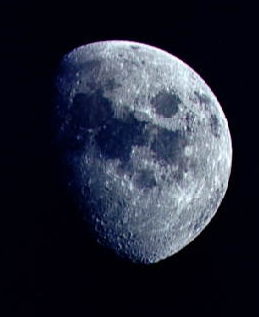The Earth's Moon
The Earth's one natural satellite, the Moon, is more than one quarter
the size of Earth itself (3,474 km diameter). Because of its smaller
size, the Moon's gravity is one-sixth of the Earth's gravity, as we
saw demonstrated by the giant leaps of the Apollo astronauts.
While there are only two basic types of
regions on the Moon's surface, there are many interesting surface
features such as craters, mountain ranges, rilles, and lava plains.
The structure of the Moon's interior is more difficult to study. The
Moon's top layer is a rocky solid, perhaps 800 km thick. Beneath
this layer is a partially molten zone. Although it is not known for
certain, many lunar geologists believe the Moon may have a small iron
core, even though the Moon has no magnetic field. By studying the
Moon's surface and interior, geologists can learn about the Moon's geological history and its formation.
The footprints left by Apollo astronauts will last for centuries
because there is no wind on the Moon. The Moon does not possess any
atmosphere, so there is no weather as we are used to on Earth. Because
there is no atmosphere to trap heat, the temperatures on the Moon are
extreme, ranging from 100° C at noon to -173° C at night.
The Moon doesn't produce its own light, but looks bright because it
reflects light from the Sun. Think of the Sun as a light bulb, and
the Moon as a mirror, reflecting light from the light bulb. The lunar phase changes as the
Moon orbits the Earth and
different portions of its surface are illuminated by the Sun.
You might also be interested in:
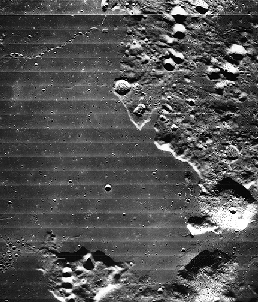
Looking up at the Moon, you can see that there are dark regions and light regions. With binoculars, you can even see that the dark regions are smooth compared to the light regions which have many craters.
...more
Scientists have studied the ages of rocks in regions with craters and determined when in the Moon's past the craters were forming most quickly. By studying the light-colored regions, called highlands,
...more
The diagram shows the Moon in different positions along its orbit around the Earth. The Sun is off in the distance, lighting the Earth-Moon system. At any position, half of the Moon is illuminated by the
...more
The Earth's Moon is the fifth largest in the whole solar system, and is bigger than the planet Pluto. The Moon has a nearly circular orbit (e=0.05) which is tilted about 5° to the plane of the Earth's
...more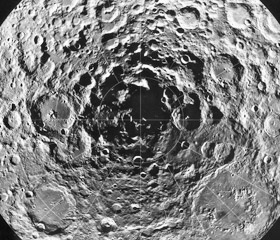
The North and South Pole of the Moon are interesting places. Some areas near the Moon's poles are almost always in sunlight. Other places near the poles are always in dark shadows. Earth is tilted on its
...more
Currently, the theory that best explains all the evidence is the collisional ejection theory. This theory holds that the Moon formed from debris ejected from the Earth when a large object (possibly as
...more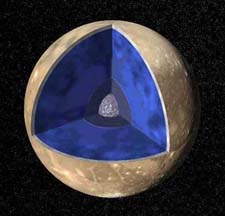
The picture shows the moon's crust, about 60=150 km thick, followed by the lithosphere, shown in blue. The moon's lithosphere is the major portion of the interior, about 1000 km thick. The moon's core
...more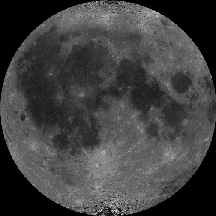
Radar images of the Moon's surface taken by American Defense Departments's Clementine lunar probe have pointed to the possibility of finding water on the Moon. The images of the Moon's south pole region
...more
